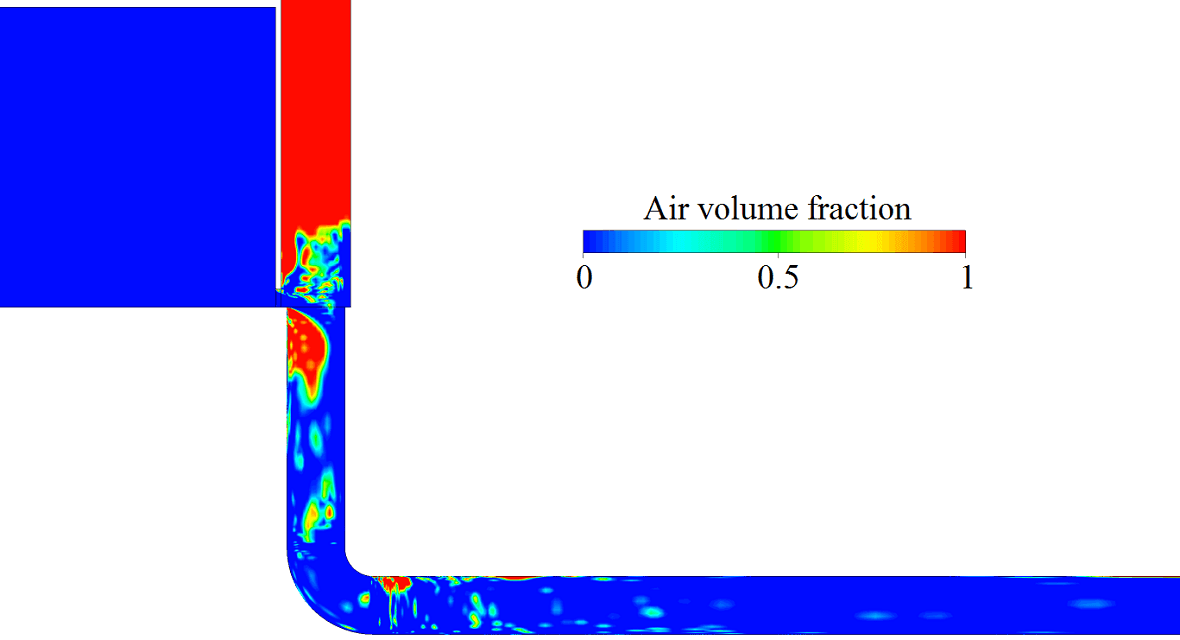Investigation of air blowout, geyser, from a bottom outlet

In water systems, geysers, or air blowouts as they are often called, are a phenomenon that occurs under dynamic flow conditions. The phenomena is so far not well understood. Due to the complexity of the issue including its transient feature, it is difficult to quantify the air amount and blowout frequency. Due to uncontrolled fluctuations in both flow rate and pressure in the system, air entrainment is an issue that affects operation.
Due to the combination of intake geometry and flow conditions, air entrainment and detrainment is inevitable and gives rise to unfavourable flow conditions and in many cases harmful consequences to safety. By analysing the field data from flood tests and CFD simulations knowledge on this phenomenon will be improved. Reliable spillway flow modelling leads to reliable design and refurbishment, which is essential for both discharge safety at extreme floods and daily operation at medium and low floods.
The following aspects are to be addressed to achieve this:
- evaluate if CFD can reproduce the hydraulic phenomenon observed in the field tests.
- identify major scenarios at different gate openings or flow conditions for prototype operations.
- estimate volumes of the trapped air as it is otherwise difficult to quantify it by other means.
- predict frequency of air blowouts at various gate openings and compare with prototype observations.
Fakta
- Startdatum:
- 01 okt. 2019
- Slutdatum:
- 01 okt. 2020